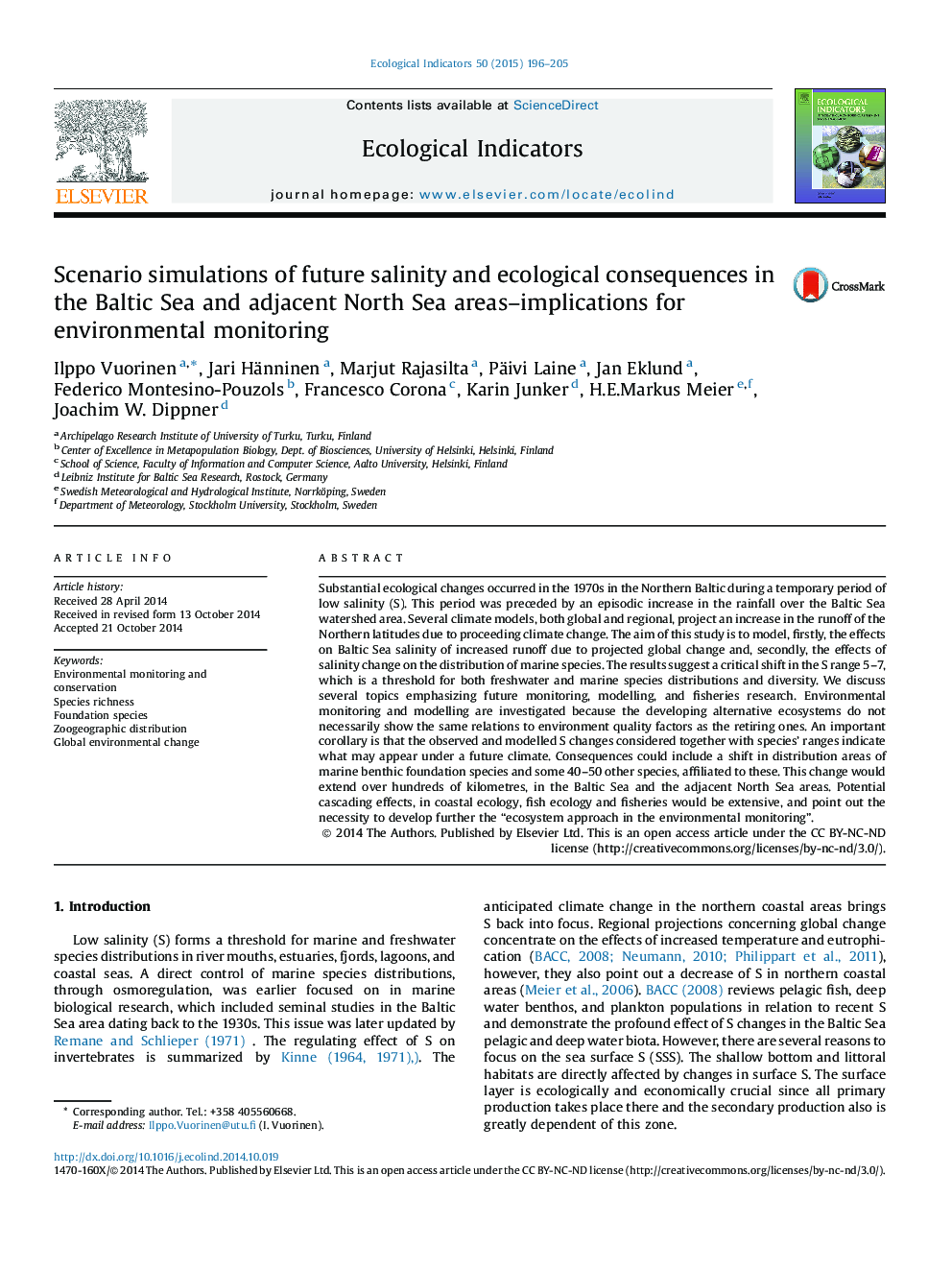| Article ID | Journal | Published Year | Pages | File Type |
|---|---|---|---|---|
| 6294764 | Ecological Indicators | 2015 | 10 Pages |
Abstract
Substantial ecological changes occurred in the 1970s in the Northern Baltic during a temporary period of low salinity (S). This period was preceded by an episodic increase in the rainfall over the Baltic Sea watershed area. Several climate models, both global and regional, project an increase in the runoff of the Northern latitudes due to proceeding climate change. The aim of this study is to model, firstly, the effects on Baltic Sea salinity of increased runoff due to projected global change and, secondly, the effects of salinity change on the distribution of marine species. The results suggest a critical shift in the S range 5-7, which is a threshold for both freshwater and marine species distributions and diversity. We discuss several topics emphasizing future monitoring, modelling, and fisheries research. Environmental monitoring and modelling are investigated because the developing alternative ecosystems do not necessarily show the same relations to environment quality factors as the retiring ones. An important corollary is that the observed and modelled S changes considered together with species' ranges indicate what may appear under a future climate. Consequences could include a shift in distribution areas of marine benthic foundation species and some 40-50 other species, affiliated to these. This change would extend over hundreds of kilometres, in the Baltic Sea and the adjacent North Sea areas. Potential cascading effects, in coastal ecology, fish ecology and fisheries would be extensive, and point out the necessity to develop further the “ecosystem approach in the environmental monitoring”.
Related Topics
Life Sciences
Agricultural and Biological Sciences
Ecology, Evolution, Behavior and Systematics
Authors
Ilppo Vuorinen, Jari Hänninen, Marjut Rajasilta, Päivi Laine, Jan Eklund, Federico Montesino-Pouzols, Francesco Corona, Karin Junker, H.E.Markus Meier, Joachim W. Dippner,
